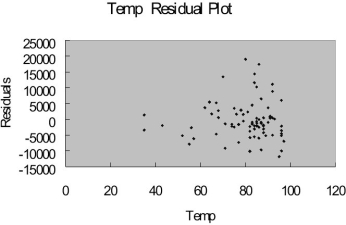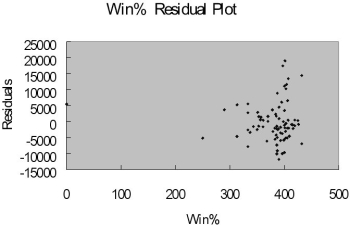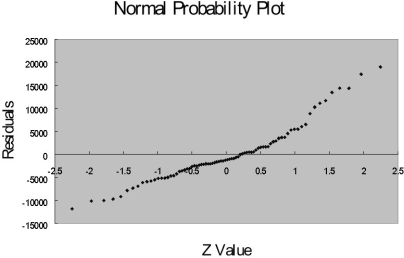TABLE 15-9
Many factors determine the attendance at Major League Baseball games. These factors can include when the game is played, the weather, the opponent, whether or not the team is having a good season, and whether or not a marketing promotion is held. Data from 80 games of the Kansas City Royals for the following variables are collected.
ATTENDANCE = Paid attendance for the game
TEMP = High temperature for the day
WIN% = Team's winning percentage at the time of the game
OPWIN% = Opponent team's winning percentage at the time of the game WEEKEND - 1 if game played on Friday, Saturday or Sunday; 0 otherwise PROMOTION - 1 = if a promotion was held; 0 = if no promotion was held
The regression results using attendance as the dependent variable and the remaining five variables as the independent variables are presented below.




The coefficient of multiple determination ( R 2 j ) of each of the 5 predictors with all the other remaining predictors are,
respectively, 0.2675, 0.3101, 0.1038, 0.7325, and 0.7308.
-Referring to Table 15-9, what is the p-value of the test statistic to determine whether TEMP makes a significant contribution to the regression model in the presence of the other independent variables at a 5% level of significance?
Definitions:
Porter and Lawler
A theory by Lyman W. Porter and Edward E. Lawler that suggests job satisfaction is determined by the perceived relationship between effort, performance, and rewards.
Employee Ability
Refers to the skills and capabilities that an individual possesses to perform job tasks effectively.
Role Clarity
The clear understanding of one's responsibilities, tasks, and expectations in a job or position within an organization.
Task Accomplishment
The successful completion or achievement of a specific task or objective.
Q2: Referring to Table 17-6, what would be
Q8: Which famous statistician developed the 14 Points
Q29: Referring to Table 15-7, suppose the chemist
Q55: Referring to Table 18-8, an R chart
Q76: Referring to Table 14-4, suppose the builder
Q80: Referring to Table 13-7, to test whether
Q86: The minimum expected opportunity loss is also
Q183: When a time series appears to be
Q225: Referring to Table 14-17, there is not
Q242: Referring to Table 14-16, what is the